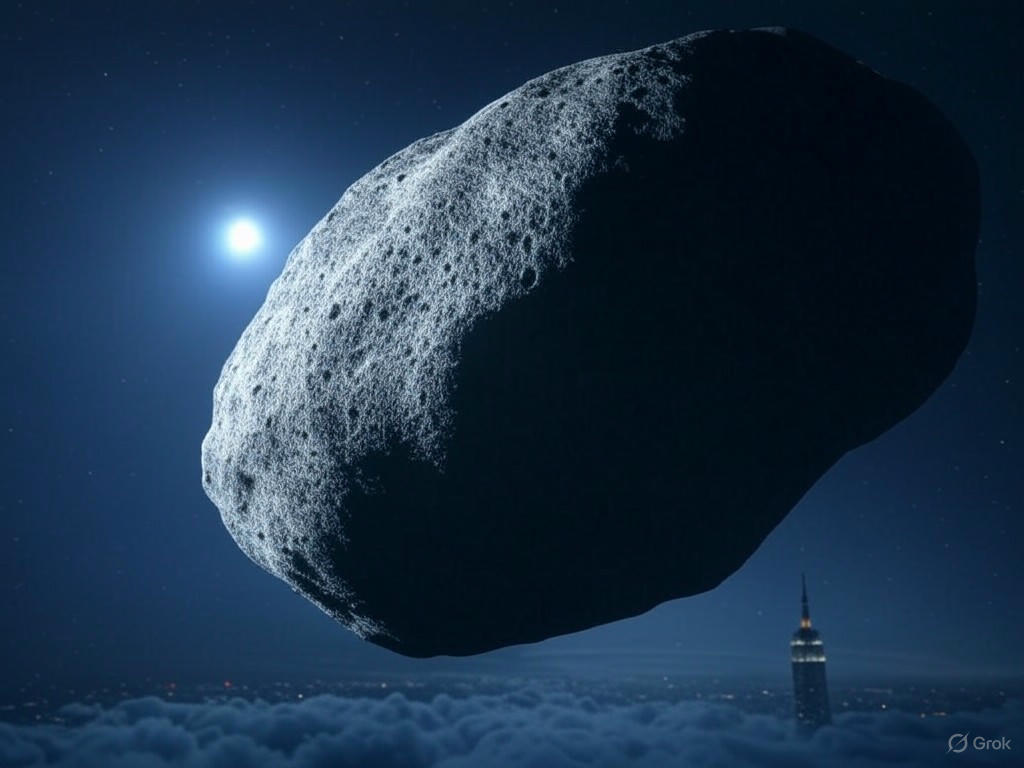Colossal Asteroid to Skim Past Earth in 2025: A Cosmic Close Call
In a breathtaking display of cosmic choreography, a gigantic asteroid, larger than the iconic Empire State Building, is set to make a close pass by our planet on June 5, 2025. Known by its scientific designation 424482 (2008 DG5), this celestial giant has captured the attention of astronomers and space enthusiasts alike. While the thought of an object of such magnitude hurtling through space might evoke images of cataclysmic disaster, experts assure us that this event will be a safe, albeit thrilling, spectacle.
The asteroid, first identified in 2008, measures an estimated 1,200 feet in diameter, dwarfing many of Earth’s tallest structures. Its trajectory will bring it within a relatively close distance of our planet—close enough to be considered a ‘near-Earth object’ by NASA’s standards, yet far enough to pose no immediate threat. Scientists at observatories worldwide have been tracking its path with precision, using advanced telescopes and computer models to predict its journey. Their calculations indicate that 424482 will pass by at a safe distance of approximately 3.2 million miles from Earth, roughly 13 times the distance between our planet and the Moon. This proximity offers a rare opportunity for researchers to study the asteroid’s composition, structure, and behavior in detail.
What makes this event particularly exciting is the chance to learn more about the building blocks of our solar system. Asteroids like 424482 are remnants from the early days of planetary formation, often carrying clues about the materials and conditions that existed billions of years ago. By analyzing the light reflected off its surface, scientists hope to determine whether it is composed primarily of rock, metal, or a combination of both. Such data could provide invaluable insights into the history of our cosmic neighborhood and even inform strategies for future asteroid deflection missions, should a more dangerous object ever be detected on a collision course with Earth. Public interest in the event is also expected to soar, with stargazers encouraged to look up on the night of June 5, though the asteroid will likely be visible only through powerful telescopes.
As the date approaches, space agencies and educational institutions are gearing up to share this moment with the world. Live streams, virtual watch parties, and public lectures are being planned to engage communities and foster a deeper appreciation for the wonders of the universe. While 424482 will not alter life on Earth, its flyby serves as a humbling reminder of our place in the vast expanse of space. It underscores the importance of continued vigilance and investment in space exploration to monitor and protect our planet from potential cosmic hazards. For now, let us marvel at this extraordinary visitor from the depths of space, a silent giant passing through the night sky, reminding us of the endless mysteries waiting to be uncovered beyond our world.


